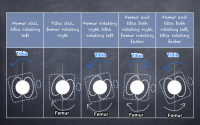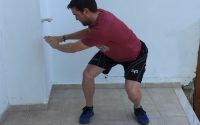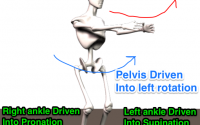Subconsciously Driven Movement
One of my favourite subjects ever!! When you think about this is makes so much sense. I’ve mentioned the gap between exercise and function i.e. if they want to get back to football after a knee injury, they need to do more than knee extensions and hamstring curls. That’s an extreme example, so most will know that, however, how close to the function can we push them in rehab? That is the key here.
I think the biggest thing you can learn to help your rehab is to drive the motions you want subconsciously. Now what do I mean by that? What I mean is that the target joint or muscle is not whats driving the motion. The motion is being driven from somewhere else and the target tissue is part of the reaction.
It’s fine to do passive and active ROM when you are at that part of the rehab, but when you progress, there should be a move away from these conscious activities and drive motion subconsciously.
There are so many benefits to this that I’m not even sure I’ll be able to explain them all.
- The movements are more complex and involve multiple joints or the whole body
- They are encouraged to think about solving the movement puzzle and not their pain or injury
- It builds confidence the you create movement success
- Takes the fear away from movement
- Allows more natural movement patterns to be explored
- Avoids conscious interference of joint ranges and muscle activation
Honestly, the list could go on and on. The real problem I have when really consciously driven exercise are used is that the gap between them and function is so far. In the consciously driven movements you will be trying to use the conscious brain to organise the movement. This is way off!! In real life you are trying to complete movement tasks and the information is flowing to the brain and the brain sorts it all out and reacts to the information. The reaction is subconscious and this is where rehab should be moving towards as soon as your patient is able.
As an example, when you are walking down the street you have no idea what muscles are doing what, at what speed, at what level of force, timing relative to other muscles…you have no idea!! Which is good, because if you do try to interfere, movement starts looking pretty weird, pretty quickly. Next time you are walking around, try and control just one thing, say your calf, try and consciously control its force and timing as you walk…becomes pretty obvious we don’t want conscious interference in our movements!!
Rehab exercises should focus on driving motion through a joint, muscle, tissue and not controlling it. For example, lets consider a patient where you want to fire their right glute med. I would use similar strategies as with any patient, as in they would be upright with right foot forward to start with. I would try the same drivers, rocking on the right knee and driving the right had, left lateral over head. This works great as a starter, but you can easily progress them if needed.
If you don’t feel there is currently not enough stimulus to fire the muscle, my thought is…how can I increase the stimulus? What variables am I going to use? My thoughts are that the most useful are speed, ground reaction force and ROM. I tend to use all 3 to my advantage initially and then tweak them out as I am able.
Instead of rocking slowly back and for, I would change the driver to a short range lunge. You still start with right foot forward and then do a short range lunge. I ask them to quickly stamp their foot and return to their starting position. One they get this I’ll add the left lateral overhead hand driver in. This strategy takes advantage of increase GRF, increased speed and a shorter ROM. The GRF increases the stimulus to fire the muscle and the increased speed makes it less likely their body will choose a big ROM. You can tweak all variables from here….starting position, direction of lunge, speed ROM, loading the movement…etc. However, once you’ve found a way to fire the muscle you can gradually take away the increased stimulus until their are fire the muscle effectively in gait.
This is just another example of using knowledge of movement principles, subconsciously driven movement in this case, to be effective for the patient standing in front of you.
Physioblogger


